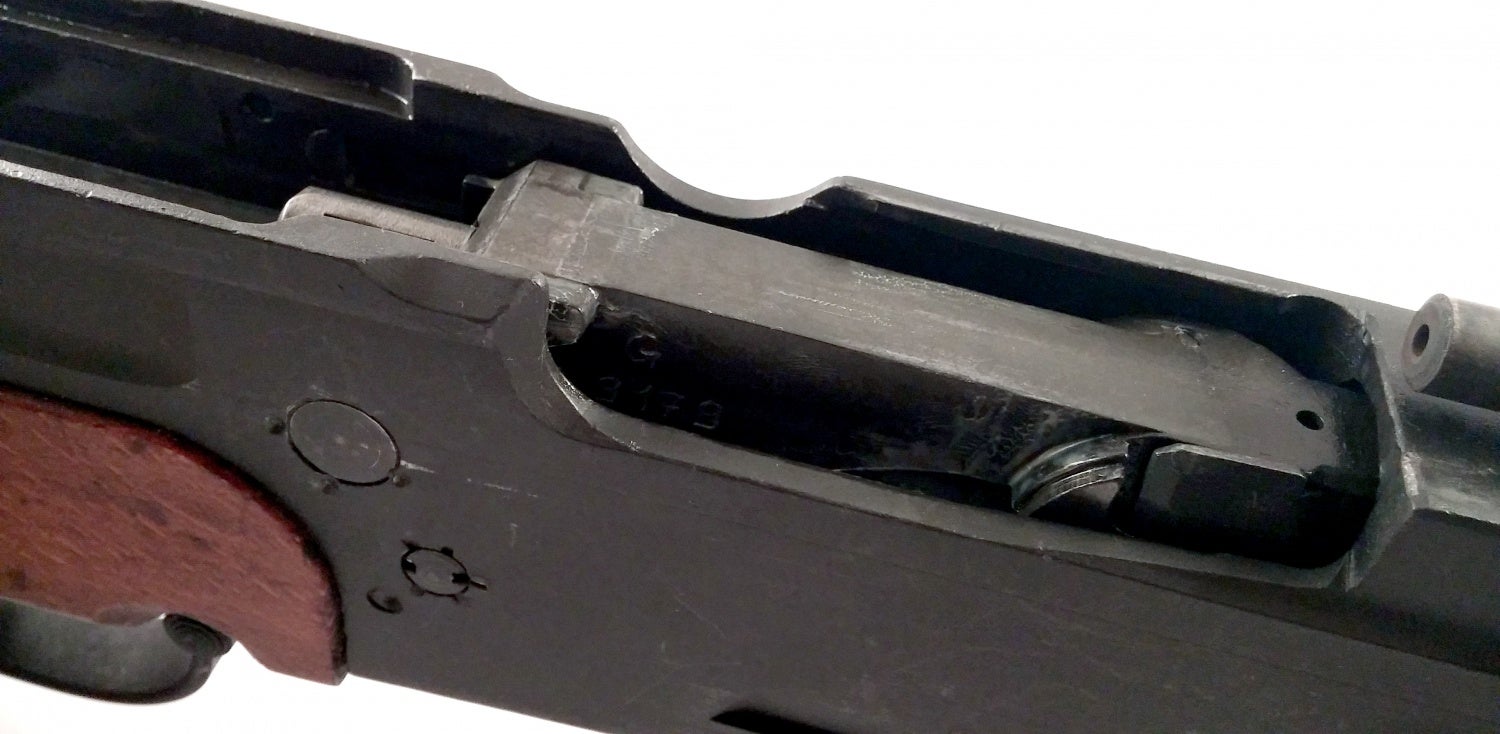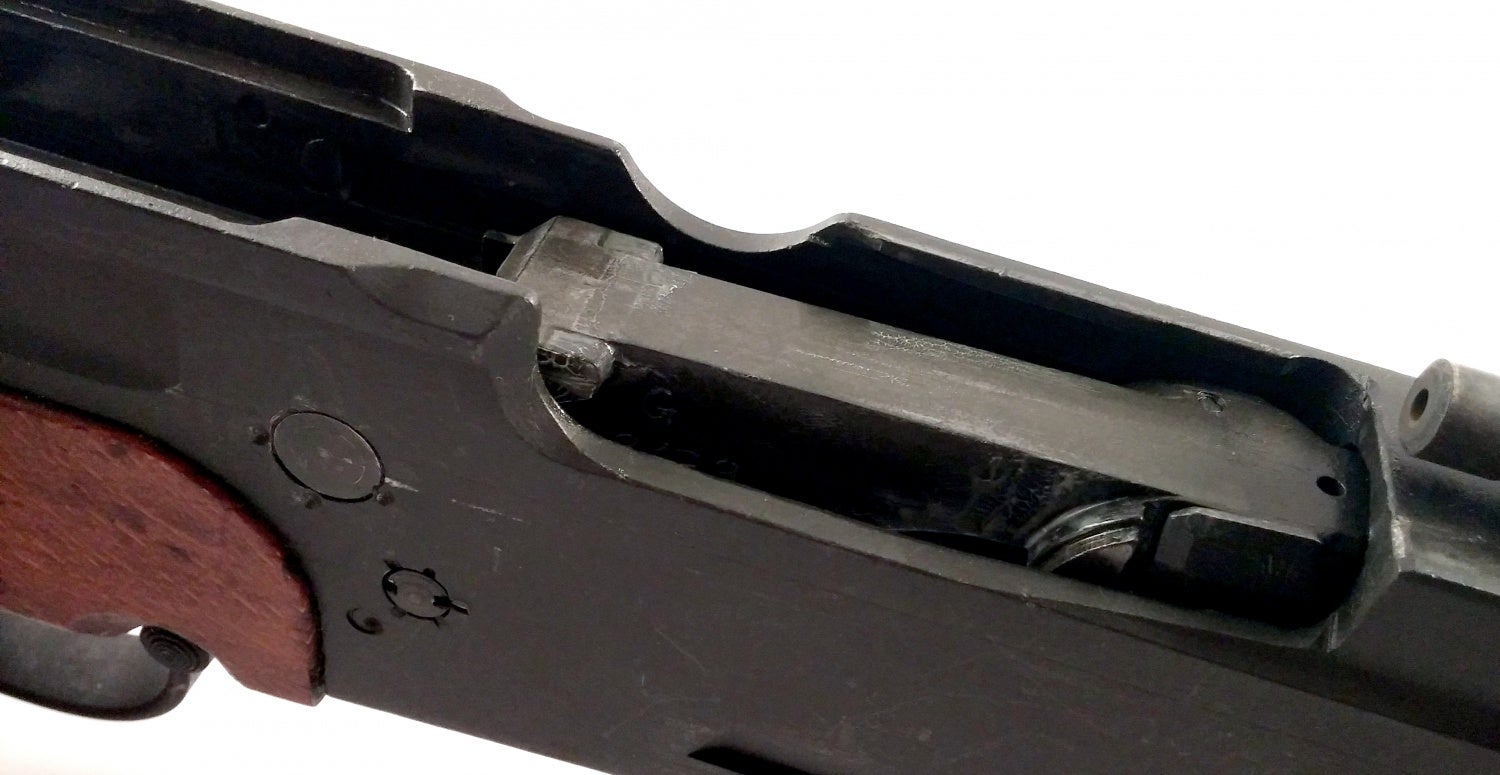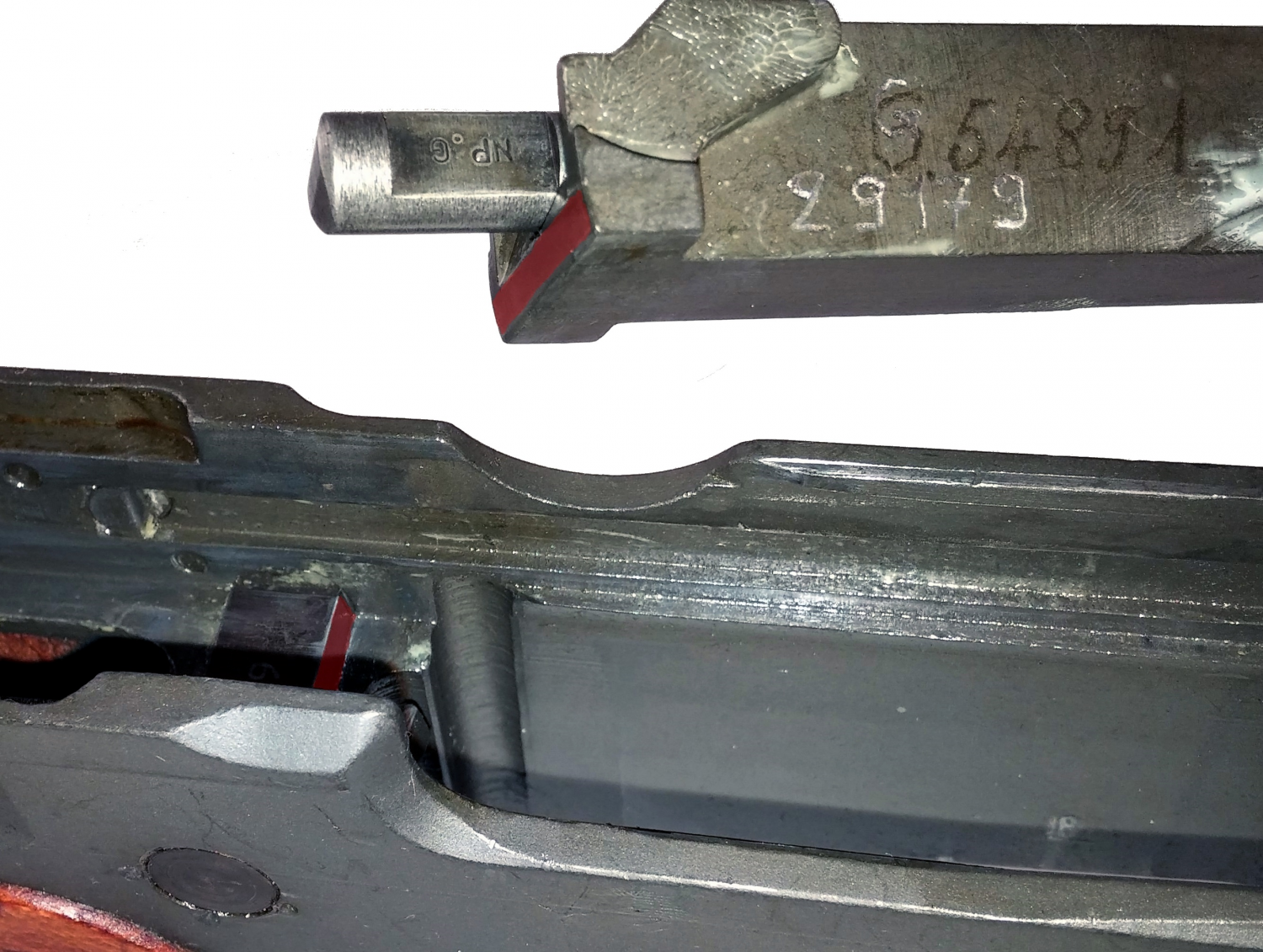Locking systems we have previously covered include tilting barrel locking, the most common pistol locking mechanism, and rotary bolt locking, the most common rifle locking mechanism. However, at one time another locking mechanism was widely believed to be optimum for military rifles, due to its simplicity of manufacture and compact design. This was the tilting bolt locking mechanism, and it was incorporated into many famous and successful designs, including the SVT-40, SKS, StG-44, and FN FAL.
Tilting bolt locking is similar to tilting barrel locking, but it is essentially reversed. Instead of the barrel tilting into alignment with locking surfaces in the moving parts group, the breechblock is the tilting element, and it is cammed into its locking position by another element, such as an operating rod or bolt carrier.
- Operating rod: A long rod-like element of the moving parts group that interacts with another element, often the breechblock, and transfers momentum to it which is used to operate the action.
- Bolt carrier: An element which cradles and supports the bolt, protecting it from the elements, and which also often actuates the locking mechanism.
We will discuss bolt carriers and operating rods in more detail later. Now, we can see how the tilting bolt system works in the photos shown below of a MAS-49. In these photos, the bolt carrier has been removed to show the action of the bolt:

Notice how the rear of the bolt moves down to prop the breechblock against the back of the chamber. The locking surfaces of the MAS-49 are shown highlighted in red in the photo below:
Note that in some designs, the bolt does not tilt down to lock; in the Polish wz. 38M, for example, the bolt tilts up to lock, while in the Czech ZH-29, it tilts to the side. The tilting bolt system of locking was valued for its strength, capable of handling high pressure rifle rounds, its compactness, and its simplicity of manufacture. However, it eventually fell out of favor, being supplanted by the rotary bolt in most modern applications, partly due to the tilt locking system wearing more quickly, and partly due to less potential for accuracy. Still, despite being hardly used at all today, the tilting bolt locking system still has a lot of promise.
 Your Privacy Choices
Your Privacy Choices

